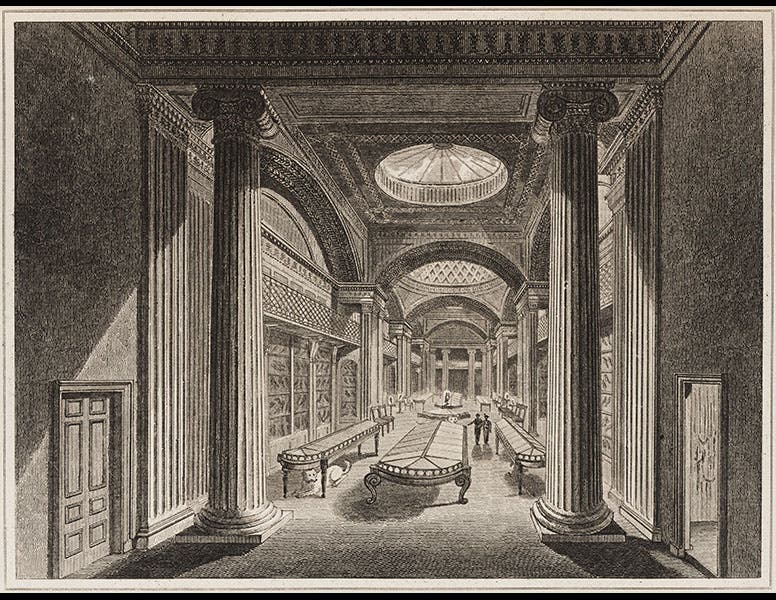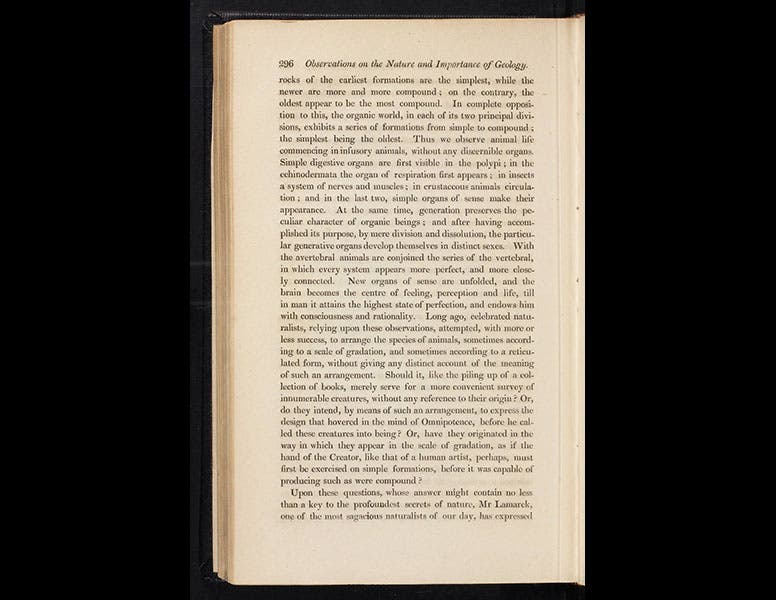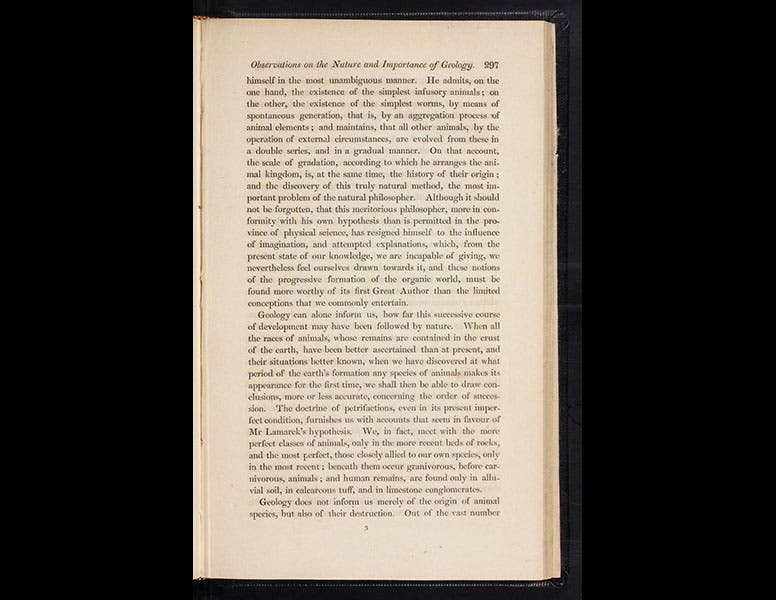Scientist of the Day - Robert Jameson

Linda Hall Library

Linda Hall Library
Robert Jameson, a Scottish geologist and professor of natural history at Edinburgh University, was born July 11, 1774. Jameson has always had a slightly sour reputation, primarily because of Charles Darwin’s reminiscences about his days at Edinburgh and Jameson’s’ “incredibly dull” lectures. Jameson was also one of the last of the geological Neptunists, who believed that all rocks, including granite and basalt, had been deposited from water, a view that Darwin also mocks in his Autobiography.
But Jameson had a sizable up-side. He was an assiduous collector of fossils, skins, and minerals, and his collection morphed into the Edinburgh College Natural History Museum (first image), which became the Royal Museum of Edinburgh in 1904 and is now part of the National Museum of Scotland. And it turns out that Jameson had a little secret that makes him much more interesting. In 1826, an anonymous article was published in the first volume of the Edinburgh New Philosophical Journal, titled “Observations on the Nature and Importance of Geology,” in which the author praised the idea of the transmutation of species, as advocated by the French zoologist Jean Baptiste Lamarck (third and fourth images). Since there was a known Lamarckian at Edinburgh at this time, Robert Grant (whom Darwin praised in the same autobiography where he damned Jameson), it has always been assumed that Grant was the author of this proto-evolutionary piece. But this assumption was ill-founded, for it turns out that the most likely author is Jameson, as scholar James Secord demonstrated convincingly some years ago. Jameson was proposing evolutionary ideas long before Darwin had any such notions! We like to divide historical figures into good guys and bad guys, and Jameson has usually been a bad guy, but it turns out that, under his black hat, he had a rose in his teeth. Perhaps Darwin should have paid more attention in Jameson’s class.
The first two images above are from an obituary written by Jameson’s nephew in the Edinburgh New Philosophical Journal in 1854. The anonymous evolutionary paper now attributed to Jameson (10 pages long) can be read in its entirety online in the Library’s digital collection.
Dr. William B. Ashworth, Jr., Consultant for the History of Science, Linda Hall Library and Associate Professor, Department of History, University of Missouri-Kansas City. Comments or corrections are welcome; please direct to ashworthw@umkc.edu.








